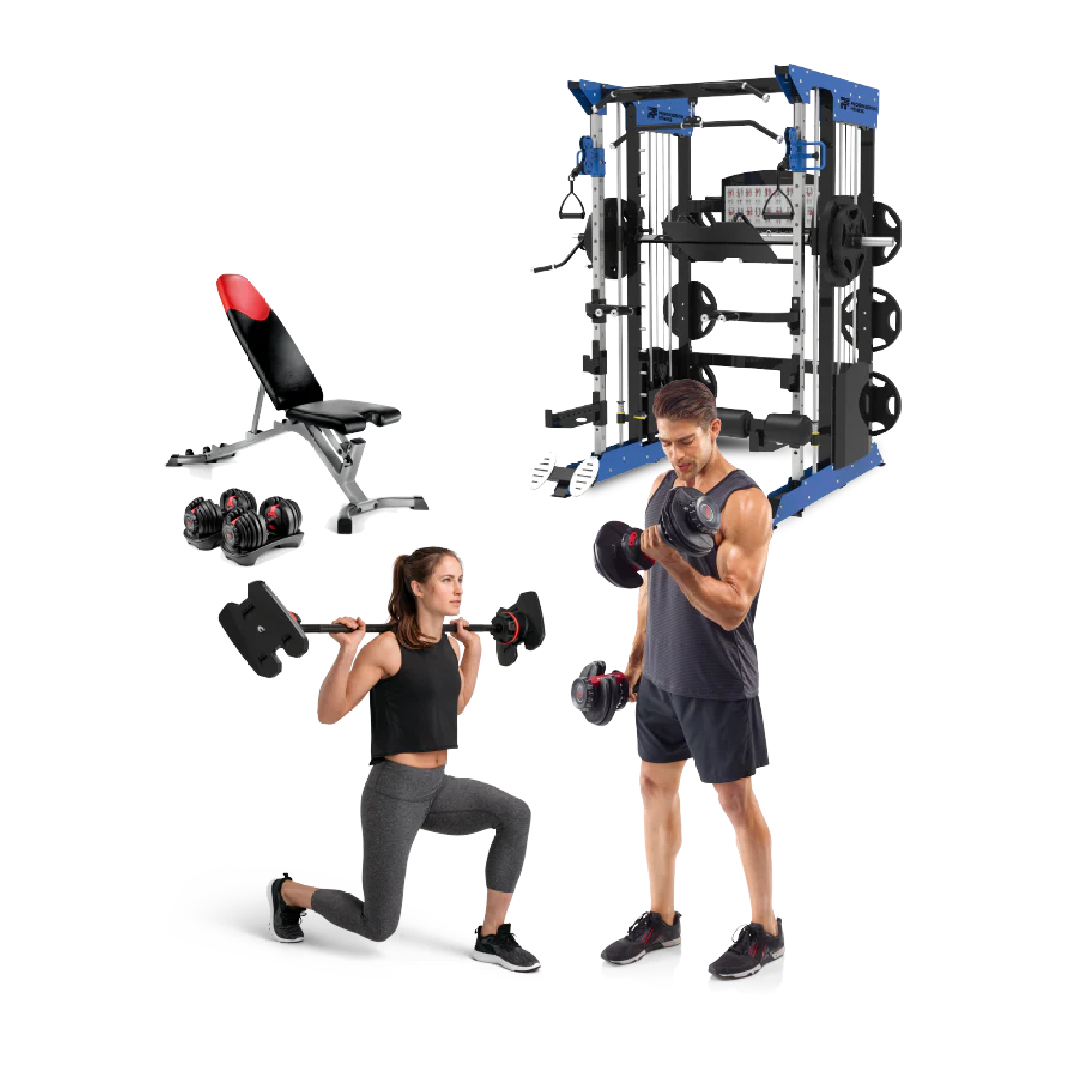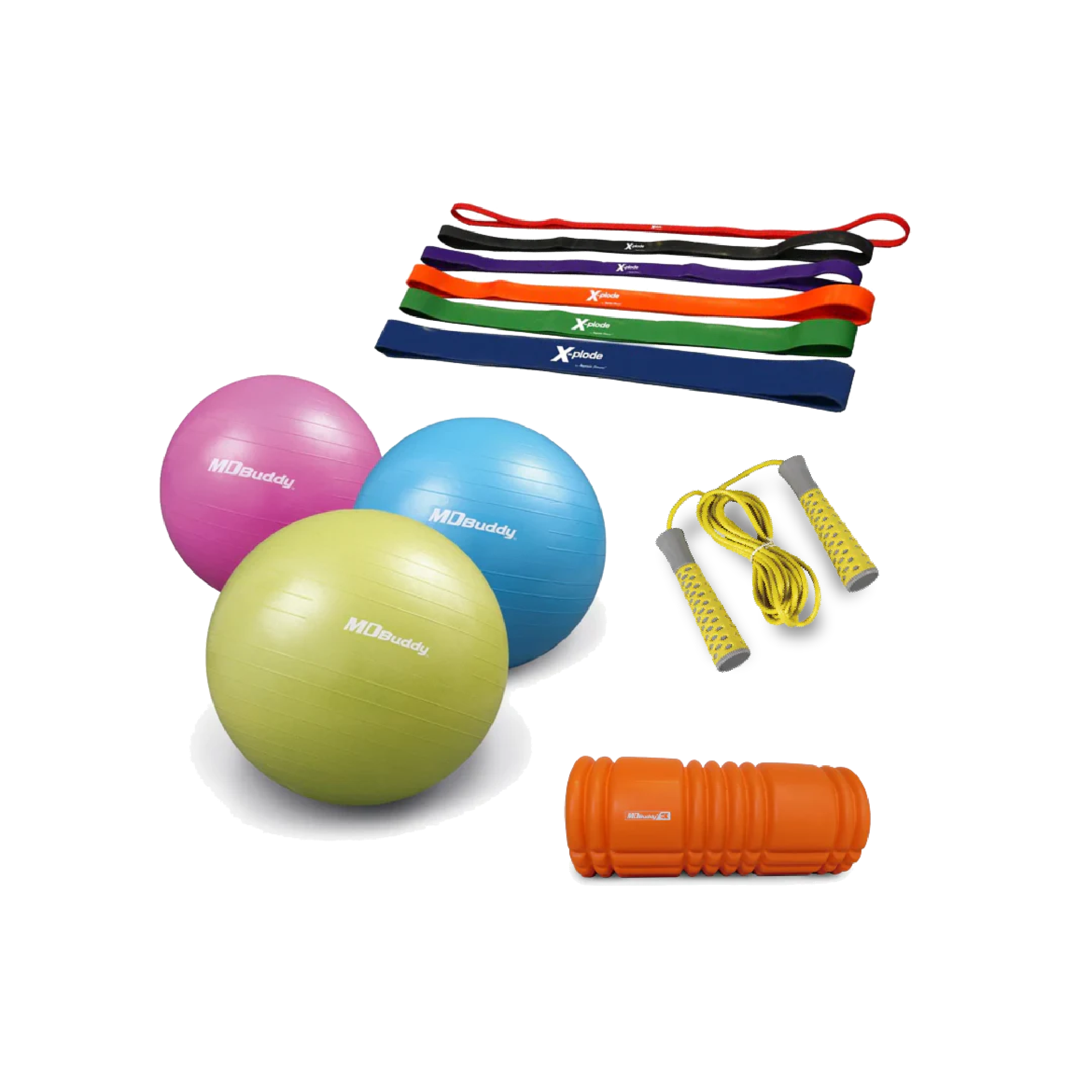How to Make the Most of Your Home Gym Space
Space might be the final frontier to Star Trek fans, but it’s often the first thing you want to consider when you’re planning a home gym. Failing to gauge the dimensions of your workout area properly can result in cramped workout conditions, putting your noggin through your ceiling tiles or having to disassemble and return the equipment you just bought and assembled.
Properly measured, planned and equipped, any size of workout space – from the corner of a room to an entire garage – can make your exercise time comfortable, productive, and rewarding.
Measure and Envision

Measuring is not simple math. There’s more to it than just determining the cubic feet of an area then subtracting the total height, width, and length of the equipment you want to put in it.
If you’re looking for more specific guidelines on what fits into what, the American Council on Exercise has more detailed guidelines on how much extra space specific equipment will require. For instance, you’ll need 20 to 50 square feet to use free weights properly. Treadmills require about 30 square feet, and a multi-gym will need anywhere between 50 and 200 square feet. But, of course, that’s before your height measurements.
Here's Where It Gets Complicated.

You want to make sure you have room to walk around your equipment. You’ll also want adequate space above your equipment for exercises like pull-ups and chin-ups. If you’re setting up in a sloped-ceiling area like an attic, your rack is definitely going to be in the middle of the room.
Attachments and adjustments can change the basic dimensions of a fitness product. For example, the specifications for some racks might provide a footprint based on the area of its uprights alone - leaving out the extra space taken up by weight plate storage pegs or equipment features that swing out or up. Machines also often require additional space for safe operation. For instance, treadmills come with specific instructions on how far they need to be stationed from walls behind, in front, or to either side.
How Do You Want to Exercise?

It’s also likely that you’ll want to arrange your equipment so it's convenient to the flow of your workout routine – especially if you’re into circuit training or cross circuit training. You’ll want wide, unobstructed pathways from one piece of equipment to another.
Arraying your equipment in order of usage might mean you can’t just slot everything in like you’re playing Tetris. This might seem like a minor issue for those of us who can wheel the treadmill to a different spot when we change our minds. However, some hardcore home gym owners take it so seriously that they’ll hire professional home gym floor plan designers to ensure an optimum flow between cardio exercise and strength training exercises.
Resources for Home Gym Planning

If you have your eye on a particular piece of equipment, it’s always wise to seek the user manual online. Manuals usually provide a complete view of the product with accurate dimensions and guidelines for leaving space around them. This info could help you head off an unpleasant surprise during assembly or use.
Storage

Not all equipment permanently resides where you use it. Smaller items like resistance bands, dumbbells and kettlebells need to be shelved out of the way to prevent damage, tripping hazards and general clutter.
Storage solutions need to satisfy two criteria: They need to be compact, and they need to be handy. Racks are available for your free weights, and there are some ingenious solutions for other small exercise equipment – even in limited spaces.
Little Space? No Big Problem.

Are you living in a one-bedroom apartment? Is your house is already almost full? Do you frequently travel from hotel room to hotel room? Your workout area doesn’t have to sprawl very far to accomplish workout goals like fat burning, greater endurance, improved functionality, and more muscle strength. You need only the corner of a room for body-weight exercises or on-the-spot cardio.
Consider compact exercise equipment like jump ropes, suspension trainers, resistance bands, or an adjustable dumbbell. In addition, a yoga mat establishes a comfortable base for your pre-workout stretch, workout, and post-workout recovery. More great news – recovery tools like foam rollers and percussive massage guns are also relatively compact.
Storage is a cinch – a closet, shelving unit or hidden spot along the wall will do. Some equipment will even fit in a dresser drawer. If you’re a do-it-yourself type, you can build a very handy door-mounted storage pegboard.
Flaman Fitness Expertise Helps You Make the Most of Your Space.

Whether your home gym plans involve a small corner, extra room, attic, basement, or garage, you want to make the most of your available space. Our fitness pros are experts in matching customers with the right equipment. They’ve helped many home gym enthusiasts create their ideal workout experience.
So bring in your dimensions, fitness goals, and budget. You’ll be amazed what they can set up for you – including fitness package deals for a great start to a healthy new life.
Category: Your Fitness Resource
Tags:
comfortable
cramped
dimensions
Equipment
equipped
exercise
exercises
Fitness-Tips
garage
health
measure
measuring
planned
planning
productive
rewarding
space
square feet
strength
weights





